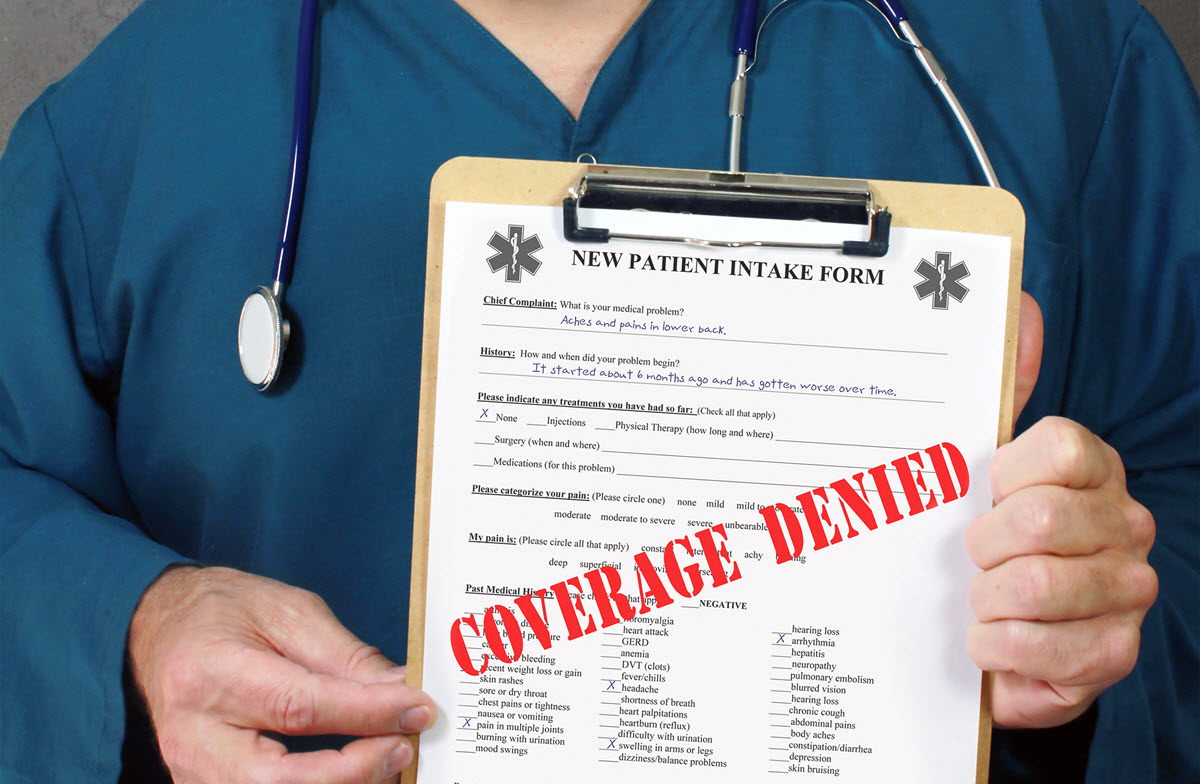Almost every health insurance “appeal” story begins with a frustrating experience.
For example: You go to your doctor’s office for your annual check-up, and tell him you’ve been having terrible migraines. They’ve been coming more frequently, and they’re completely debilitating. After some questions, he hands you two prescriptions: one for a blood test, and one for an MRI. He tells you to wait until the office calls to schedule the MRI, because they need to obtain approval from your health insurance.
On your way home, you stop at the hospital for your blood test. You think all you have left to do is wait for your doctor to call to schedule your MRI, and then you’ll be on your way to treatment and back to a normal life.

Finding out that coverage was denied may not be the end of the story. Your health plan’s customer advocates can help you understand what can be done if you get a denial of coverage letter.
But you never receive that call from your doctor. Instead, you receive a letter saying your MRI will not be covered. You also receive a bill in the mail, saying you owe $500 for the blood test. You call member service, and find out your blood tests weren’t covered because they were billed as “routine.” You don’t understand; you’re just trying to get treatment for these horrible migraines! Naturally, you’re irritated and confused, and you want to know what you can do to have your blood tests and MRI covered.
In both of these situations, you have received a health insurance denial of coverage, but it’s important to keep in mind that this isn’t the end of the story. Whenever you receive a denial, you can appeal the decision.
The instructions on how to file an appeal can be found in the denial of authorization letter or claims notice, which is also known as the Explanation of Benefits (EOB). They usually are found within the last couple pages, and include how much time you have to file an appeal as well as the address for the Member Appeals Department, where you’ll send your appeal and other information. Alternatively, you can also call member service to file an appeal, using the number on the back of your Member ID card.
It’s tempting to want to file your appeal immediately when you receive a denial, but it may not be in your best interest. To improve the chances of your appeal being approved, here are a few steps you can take before you file an appeal.
Your denial letter and EOB provide the reasons your medical service was denied, but you may not feel that you really understand the explanation. Don’t feel bad — claim issues can be pretty complicated, and even people who work in the health insurance industry sometimes find the industry’s terms confusing. Read the denial carefully, but don’t hesitate to use your best resource: member service.
Our customer advocates are trained to understand the specific reasons behind each denial, and help guide you through your EOB. When talking to an advocate, be sure to ask him or her for detailed explanations behind your denial, and take note of any procedure and diagnosis codes, relevant medical or pharmacy policies, and preventive schedules. If there are relevant medical and pharmacy policies or preventive schedules, request a copy of the policy or schedule be sent to you. Sometimes a denial can be resolved with a call to member service; sometimes it may take a few more steps. If you do have to file an appeal after your call, it’s good to have as much information as possible about the decision.
Don’t be afraid to ask your customer advocate follow-up questions. The important thing is to fully understand what you are appealing. If you still don’t understand the denial after the advocate explains, ask them to rephrase their explanation. Our customer advocates understand better than anyone that this stuff can be tricky, and are more than willing to help make sure you understand your coverage.
Discussing a denial with your doctor can provide additional clarification. Bring along any materials from your conversation with your customer advocate. Your doctor can explain the medical terminology within the various policies, and determine what clinical information needs to be submitted to show that you meet the criteria or guidelines.

Many factors can impact whether you are covered; our customer advocates can get you a clear answer — before or after you get a procedure or prescription.
Additionally, your doctor can review your medical records to confirm that your original claim was submitted accurately, with all the correct procedure and diagnosis codes. Sometimes your doctor may determine a different procedure or diagnosis code would be more appropriate. For example, in the above scenario, your doctor may look at the prescription for your blood work and determine that the original script should have included a diagnosis for migraines instead of the “routine” diagnosis that caused the denial. If that’s the case, you won’t need to file an appeal at that time, as your doctor should file those corrections for you.
When you file an appeal, you are trying to prove the denial is incorrect and Highmark should overturn it. Therefore, you may want to send new documentation to back up your appeal, helping explain why the denied benefit should be covered. Some examples of the documentation you can send are: balance-due bills, Benefit Booklet pages, letters from your doctor, or anything that we can review and compare to the information we already have.

When in doubt, call our customer advocates to help you understand your coverage and get its full value.
You should also submit relevant medical records as evidence for an appeal. This allows Highmark to see why your doctor requested, ordered, or performed a denied service. We’re able to compare this new information to the clinical information already submitted to us, and we can determine if the claim information is accurate, or if your clinical background satisfies the medical policy criteria.
Many incorrect denials are the result of inaccurate or incomplete information. By filling in the full picture with additional information, you increase your chances of winning your appeal. If you’re confused as to what documentation is appropriate or needed for your appeal, ask your customer advocate. They’ll review the denial and the information we already have, and provide recommendations for additional documentation.
Once you have all the documentation you feel proves the denial should be overturned, it’s time to file your appeal. To do that, follow the steps laid out in your denial notice or EOB.
Taking the steps above can improve the chances of your denial being overturned with the least amount of time and hassle. We know a denial can seem overwhelming, but remember: you’re not alone. You have customer advocates who are committed to helping you obtain the information you need, work through the filing process, and get the full value of your health plan coverage.